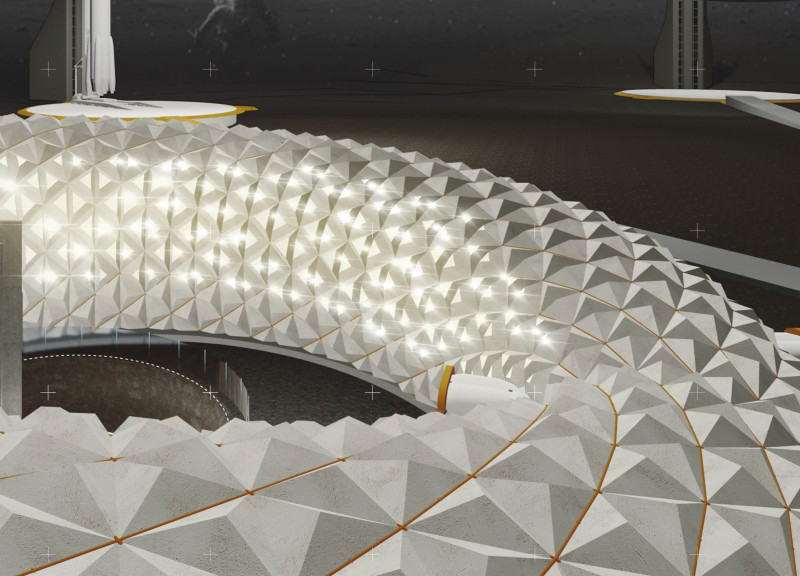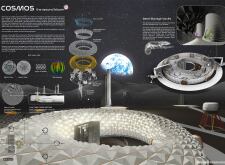5 key facts about this project
The COSMOS project is designed to create a second human settlement on the moon, located near the Peary Crater. Its purpose is to support scientific research and encourage potential communication with extraterrestrial life. The overall design emphasizes humanity's achievements, positioning the pavilion as a connection point for understanding and collaboration across different species.
Architectural Layout
The pavilion features a tiered layout that incorporates several functional areas. These include research laboratories, communal spaces, and observation decks. The design promotes efficient movement while fostering opportunities for interaction among occupants. It embraces an environment focused on exploration and learning, allowing occupants to engage with both the space and each other.
Material Considerations
The project uses specific materials chosen for their suitability in the lunar environment. Silica glass is selected for its transparency and structural strength. Lunar regolith serves as a primary resource for construction and offers protection from radiation. Arboskin, known for its durability, is also used. These materials are critical to ensuring the sustainability and practicality of the habitat on the moon.
Gene Storage Vaults
A central feature of the COSMOS design is the Gene Storage Vaults. These vaults store genetic DNA information as well as a wealth of human knowledge. They serve to preserve cultural memory and establish a neural network that connects Earth with future lunar settlements. This aspect underlines the importance of retaining information as humanity extends beyond its home planet.
Sustainability Measures
Sustainability is a key focus in the design, incorporating renewable energy options to allow the settlement to function independently. The pavilion's adaptable framework permits future changes and enhancements, ensuring it can accommodate new technologies and evolving requirements. This approach not only supports sustainability but also prioritizes resilience and practical functionality.
The observation decks afford expansive views of the lunar landscape. Occupants can gaze out onto the surface of the moon and reflect on the distant Earth. The design continually emphasizes the connection between humanity and the cosmos, encouraging understanding and fostering exploration.



















































